|
| Site Partners: | SpotterGuides | Veloce Books |
| Related Sites: | Your Link Here |
|
||||||||||
|
||||||||||
|
|
#2751 | ||
|
Rookie
Join Date: Jul 2014
Posts: 46
 |
Quote:
Last edited by MkEagle; 25 Jul 2014 at 05:03. |
||
|
|

|
|
|
#2752 | |
|
Rookie
Join Date: Jul 2014
Posts: 46
 |
Le Mans 8.469 miles (13.629 km)
1 liter = 0.264 US gallon 2012 Nissan DeltaWing Fastest Race Lap – 3:45.737 Assume 4 liters of fuel left at the end of a race stint. 11 laps per stint Fuel Consumption = (8.469 x 11) miles / (36 x 0.264) gallons = 9.8 mpg 2014 LMP1-H Porsche 919 Hybrid The Porsche 919 has a large battery that stores more energy than Toyota’s capacitor and Audi’s flywheel. The 919 could return to the pits with an empty fuel tank by using electric power. Porsche is the only LMP1 team that is capable of doing multiple 14-lap stints, which means fewer pit stops. Fastest Race Lap during 14-lap stints – 3:25.404 Assume 1 liter of fuel left at the end of a race stint. 14 laps per stint Fuel Consumption = (8.469 x 14) miles / (67.3 x 0.264) gallons = 6.7 mpg http://fiawec.alkamelsystems.com/ Select season and event > Race > Hour 24 > Analysis Race Nissan DeltaWing: 300 HP , 475 kg (without driver) , 40 liters fuel tank LMP1-H Porsche: 500-850 HP , 870 kg (without driver) , 68.3 liters fuel tank http://www.ultimatecarpage.com/car/4...DeltaWing.html http://www.ultimatecarpage.com/car/5...19-hybrid.html  
|
|
|
|

|
|
|
#2753 | |
|
Rookie
Join Date: Jul 2014
Posts: 46
 |
Let’s compare the DeltaWing to the best American Le Mans P2 cars.
Note that all P2 cars have engine air inlet restrictors. If the restrictors are removed, these cars will go quicker. The DeltaWing doesn’t have any restrictor. Road Atlanta 2.54 miles 2008 Formula Atlantic Swift-Mazda – 1:14.137 Lap Average Speed = 2.54 miles / (74.137 / 3600) hour = 123.3 mph 2012 Nissan DeltaWing – 1:12.850 Lap Average Speed = 2.54 miles / (72.85 / 3600) hour = 125.5 mph 2008 ALMS P2 Acura ARX-01b – 1:07.486 Lap Average Speed = 2.54 miles / (67.486 / 3600) hour = 135.5 mph 2008 ALMS P2 Porsche RS Spyder Evo – 1:07.061 Lap Average Speed = 2.54 miles / (67.061 / 3600) hour = 136.4 mph http://www.automobilsport.com/champc...e---45440.html http://paddocktalk.com/news/html/story-208195.html http://www.automobilsport.com/alms-p...i---45467.html Power to Weight Ratio Car weight includes driver and fuel. Assume combined weight of driver and fuel to be 80 kg during a low-fuel qualifying lap. 1 metric ton = 1000 kg Formula Atlantic Swift 016a-Mazda Power to Weight Ratio = 300 HP / (658 / 1000) ton = 456 HP/ton 2012 Nissan DeltaWing Power to Weight Ratio = 300 HP / (555 / 1000) ton = 541 HP/ton 2008 ALMS P2 Acura ARX-01b Power to Weight Ratio = 520 HP / (800 / 1000) ton = 650 HP/ton 2008 ALMS P2 Porsche RS Spyder Evo Power to Weight Ratio = 520 HP / (800 / 1000) ton = 650 HP/ton http://www.urbanracer.com/articles/anmviewer.asp?a=2878 http://www.nytimes.com/2012/11/11/au...on-tracks.html http://www.ultimatecarpage.com/car/3...a-ARX-01b.html http://www.seriouswheels.com/cars/20...-RS-Spyder.htm http://www.performancedatasolutions....che-rs-spyder/ In 2008, a P2 car could beat a P1 car. ALMS LMP2 cars were quicker than European LMP2 cars. Penske Racing’s Porsche RS Spyder with direct fuel injection won the 2008 prototype class Green Challenge by going the farthest, the fastest with the smallest carbon footprint and least petroleum consumption. “It was certainly the heyday of ALMS prototype racing over those last few years,” Long said. “I think it pushed us as a team, not only drivers but engineers. That second part of the season in 2008 had us digging very, very deep. Those final two races, in what we found in speed and physical updates on the car was unbelievable. The guys at Weissach did things that not many could do. “I was completely taken back when we showed up to Petit Le Mans and we had progressed so much in that one month between the last race. It wasn’t just that the circuit suited us a little better or we spent more time tuning the car. There were hardline developments made, and that was really cool to be a part of to feel all of the success. And I think that’s what ultimately decided the championship.” http://www.gordonkirby.com/categorie..._is_no152.html http://www.epa.gov/otaq/ld-hwy/green...Racing_101.pdf http://www.youtube.com/watch?v=c_INdbXMqsw http://www.youtube.com/watch?v=3xqpyesiWmQ   
Last edited by MkEagle; 27 Jul 2014 at 08:54. |
|
|
|

|
|
|
#2754 | |
|
Rookie
Join Date: Jul 2014
Posts: 46
 |
Road Atlanta 2.54 miles
1 liter = 0.264 US gallon 2012 Nissan DeltaWing Fastest Race Lap – 1:14.420 Assume 3 liters of fuel left at the end of a race stint. 38 laps per stint Fuel Consumption = (2.54 x 38) miles / (37 x 0.264) gallons = 9.9 mpg http://www.imsatiming.com/Results/ Nissan DeltaWing: 300 HP , 475 kg (without driver) , 40 liters fuel tank Despite starting dead last in the 42-car field, Gunnar Jeannette passed 8 cars on the first lap in the hastily rebuilt DeltaWing. Because the DeltaWing’s low weight saved wear on its tires, it skipped multiple tire changes, allowing it to place as high as third before finishing fifth overall. It was a remarkable showing for a racecar with barely more power than a typical V-6 sedan. The DeltaWing also consumed just 55 percent of the fuel of a Nissan V8-powered LMP2 car that the team benchmarked during the event. http://www.youtube.com/watch?v=qtND-KK68GY http://www.youtube.com/watch?v=nwpBYK41Tbw http://www.youtube.com/watch?v=Ku0_D8_FneU http://www.youtube.com/watch?v=lUdKk_lp2qk 
|
|
|
|

|
|
|
#2755 | |
|
Rookie
Join Date: Jul 2014
Posts: 46
 |
Sebring 3.74 miles
2013 DeltaWing – 1:53.866 Lap Average Speed = 3.74 miles / (113.866 / 3600) hour = 118.2 mph 2009 Formula Atlantic Swift-Mazda – 1:53.571 Lap Average Speed = 3.74 miles / (113.571 / 3600) hour = 118.6 mph 2008 ALMS P2 Porsche RS Spyder Evo – 1:44.581 Lap Average Speed = 3.74 miles / (104.581 / 3600) hour = 128.7 mph 2008 ALMS P2 Acura ARX-01b – 1:44.435 Lap Average Speed = 3.74 miles / (104.435 / 3600) hour = 128.9 mph http://www.planetlemans.com/2013/03/...es-at-sebring/ http://www.eformulacarnews.com/news_...0a3fedfdd15ac9 http://www.imsatiming.com/Results/ http://www.automobilsport.com/alms-1...i---34099.html Power to Weight Ratio Car weight includes driver and fuel. Assume combined weight of driver and fuel to be 80 kg during a low-fuel qualifying lap. 1 metric ton = 1000 kg 2013 DeltaWing Power to Weight Ratio = 350 HP / (555 / 1000) ton = 631 HP/ton Formula Atlantic Swift 016a-Mazda Power to Weight Ratio = 300 HP / (658 / 1000) ton = 456 HP/ton 2008 ALMS P2 Porsche RS Spyder Evo Power to Weight Ratio = 500 HP / (800 / 1000) ton = 625 HP/ton 2008 ALMS P2 Acura ARX-01b Power to Weight Ratio = 500 HP / (800 / 1000) ton = 625 HP/ton http://blogs.motortrend.com/deltawin...ing-28623.html http://www.motorsport.com/alms/news/...ng-in-sebring/ http://www.mazdausa.com/MusaWeb/disp...=news70&bhcp=1 http://www.seriouswheels.com/cars/20...-RS-Spyder.htm http://www.ultimatecarpage.com/car/3...a-ARX-01b.html http://www.youtube.com/watch?v=BWH5PP0Zj_w http://www.youtube.com/watch?v=cUxK0BQTNK4 http://www.youtube.com/watch?v=55iclnxPmeM http://www.youtube.com/watch?v=X3ZnAARwqoA The 2013 open-cockpit DeltaWing is 1.602 second quicker than the 2014 closed-cockpit DeltaWing Coupe around Sebring. http://paddocktalk.com/news/html/story-245669.html The 2013 DeltaWing is the same as the 2012 Nissan DeltaWing except for engine and tires. "The DeltaWing is unmatched by any other car I know," said Olivier Pla. "The DeltaWing has a stiff front end and soft rear end. You have to be careful when entering corners because it’s easy to make a mistake, especially during overtaking. Be patient and wait as appropriate. This is a new challenge for me and I'm glad to be part of such a program. Before the night practice, I have completed 20 laps before we had some cooling problems.” Driving the DeltaWing is fundamentally different from that of LMP2: "You do not feel the torque of the turbo engine. DeltaWing pickup speed gradually as the acceleration is linear. Once you have confidence, you can find the limit. I think Sebring is less suitable for the DeltaWing compared to Road Atlanta. We are fast in a straight line, which makes it easy to overtake LMPC and GT cars. Always keep in mind that the rear is wider than the front, which is not natural. You have to be careful with big bumps like those of Sebring Turn 2 and 3."     
|
|
|
|

|
|
|
#2756 | |
|
Rookie
Join Date: Jul 2014
Posts: 46
 |
Delta Wing Aerodynamics
A delta wing is very effective at high angles of attack. On a racecar, there’s a limit to the degree of angle of attack because it raises the center of gravity. http://federationofaeronauticalengin...aircrafts.html  
|
|
|
|

|
|
|
#2757 | |
|
Racer
Join Date: Dec 2012
Posts: 365
  |
You don't have to raise the CG to create "high angle of attack" under the car. You can build that into the design, but the real problem is that is gets draggy...
The delta wing is effective in high angle of attacks, but what they consider effective in the context of an aircraft like the Concord, is that it can generate more lift at low speeds, which is what that plane needs to take off and land. But in that landing/take-off configuration (in the picture) the plane has the worst lift-to-drag ratio. Effective, but not Efficient! The delta wing car has something very important that the Concord does not have - the car has the road underneath, the airplane has nothing but air above the wings. Because of the road under the car, the efficiency is much greater than that of the Concord during take off and landing. That is, the "angle of attack" of the floor in the car does not have to be any near as aggressive as the one in the Concord. The delta wing car is efficient. That is, produces a higher lift-to-drag number than conventional wings on race cars. |
|
|
|

|
|
|
#2758 | |
|
Rookie
Join Date: Jul 2014
Posts: 46
 |
||
|
|

|
|
|
#2759 | ||
|
Rookie
Join Date: Jul 2014
Posts: 46
 |
Quote:
|
||
|
|

|
|
|
#2760 | |
|
Rookie
Join Date: Jul 2014
Posts: 46
 |
Aerodynamic Efficiency is defined by lift-to-drag ratio. In racecar applications, it is downforce (negative lift)-to-drag ratio. Higher L/D is better.
2012 Nissan DeltaWing -L/D = 5 300 HP 475 kg (without driver) 1982 Formula 1 Williams/Brabham/McLaren-Cosworth -L/D = 8 500 HP 530 kg (without ballast and driver) http://www.highcroftracing.com/deltawing/ http://www.mulsannescorner.com/newsmarch12.html http://www.ultimatecarpage.com/car/3...-Cosworth.html http://www.ultimatecarpage.com/car/3...-Cosworth.html http://riccardopatrese.net/weblog/?page_id=5026 http://riccardopatrese.net/weblog/?page_id=232 http://mccabism.blogspot.com/2012_06_01_archive.html http://thejudge13.com/2013/09/26/f1-...onship-part-i/ http://thejudge13.com/2013/09/28/f1-...nship-part-ii/ http://thejudge13.com/2013/09/29/f1-...ship-part-iii/ http://mccabism.blogspot.com/2012/08...liography.html http://www.youtube.com/watch?v=hlbDRwzeNMA http://www.youtube.com/watch?v=NpDK7fty3Hs http://www.youtube.com/watch?v=EculHIwOuUU According to F1 aero engineer Frank Dernie, the 1982 ground-effect Williams FW08 “had the highest lift-to-drag ratio of any car I’ve ever run.” The combination of high downforce and low drag give better lap time. Like the DeltaWing, the best 1982 F1 cars did not use front wings on most tracks. Another example of “half the power, half the fuel consumption, all the performance”: In 1982, the 500 HP Cosworth DFV powered Williams FW08, McLaren MP4/1B and Brabham BT49D matched the lap times of 1000 HP turbo Ferrari and Renault on some tracks. Keke Rosberg set two track records at Brands Hatch in the 1982 Williams FW08. Brands Hatch GP circuit – 1:09.540 Brands Hatch Indy circuit – 36.38     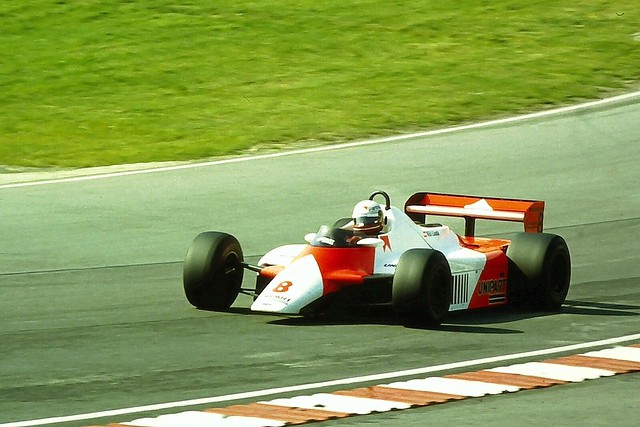 
|
|
|
|

|
|
|
#2761 | ||
|
Veteran
Join Date: Jun 2009
Posts: 1,229
   |
|||
|
|
__________________
Just give them some safety rules, limit the fuel (to control the speeds), drop the green flag, and see what happens. 
|
|
|
#2762 | |
|
Veteran
Join Date: Jan 2012
Posts: 4,434
         |
yeah, F1 in those days was just amazing .... nothing to do with the DWing but still great cars.
|
|
|
|

|
|
|
#2763 | ||
 Race Official Race OfficialVeteran
Join Date: Oct 2007
Posts: 15,648
           |
An update on the post-fire rebuild:
http://www.deltawingracing.com/news/...ing-coupe.html One thing I like about this program is that they make most of the components in-house. They don't have too many parts they can buy off the shelf so they have room for improvement on nearly every component. a true prototype 
|
||
|
|

|
|
|
#2764 | |
|
Rookie
Join Date: Jul 2014
Posts: 46
 |
Let’s compare the DeltaWing Coupe to ground-effect F1 cars.
Aerodynamic Efficiency is defined by lift-to-drag ratio. In racecar applications, it becomes downforce (negative lift)-to-drag ratio. Higher L/D is better. The best ground-effect F1 cars are aerodynamically more efficient than the DeltaWing Coupe. 2014 DeltaWing Coupe -L/D: 4 Power: 350 HP Weight: 490 kg (without driver) Top Speed: 195 mph http://www.deltawingracing.com/tech-specs/ 1980 F1 Williams FW07B-Cosworth DFV -L/D: 6.5 Power: 485 HP Weight: 580 kg (without driver) Top Speed: 175 mph (medium downforce setup) http://archive.motorsportmagazine.co...-williams-fw07 http://www.gurneyflap.com/fw07technique1.html http://www.grandprixengines.co.uk/ http://archive.motorsportmagazine.co...s-wake-mistral We know the power and top speed. Calculate aero drag. http://craig.backfire.ca/pages/autos/drag http://www.edison2.com/blog/2010/8/2...n-testing.html   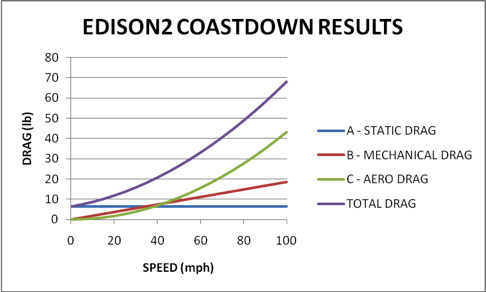 Power = (Total Resistance Force x Top Speed) / 375 Total Resistance Force = Aero Drag + Friction Total Resistance Force at Top Speed = 375 x (Power / Top Speed) 2014 DeltaWing Coupe Total Resistance Force at 195 mph = 375 x (350 HP / 195 mph) = 673 lb Assume 80% of total resistance force is aero drag at top speed for the DeltaWing Coupe. Aero Drag at 195 mph = 673 x 0.8 = 538 lb Aero Drag at 200 mph = 538 x (200 / 195) x (200 / 195) = 566 lb Aero Downforce & Drag at 200 mph: 2264 lb downforce / 566 lb drag = 4 1980 F1 Williams FW07B-Cosworth DFV Total Resistance Force at 175 mph = 375 x (485 HP / 175 mph) = 1039 lb Assume 85% of total resistance force is aero drag at top speed for the Williams FW07B. Aero Drag at 175 mph = 1039 x 0.85 = 883 lb Aero Drag at 200 mph = 883 x (200 / 175) x (200 / 175) = 1153 lb Aero Downforce & Drag at 200 mph: 7495 lb downforce / 1153 lb drag = 6.5 F1 aero engineer Frank Dernie on the FW07 “The fairing that achieved it was discovered that week at Imperial College. It was such a big gain that I came back from the wind tunnel, drew it full-size overnight and got It made and fitted in time for the 1979 Silverstone race. It was worth 1.5 seconds a lap!" "I don't really remember how much the underside and rear wing contributed to the overall downforce probably about 80/20 per cent. But since the rear wing was a significant part of defining the wake pressure, which drove the underbody performance, it is impossible to separate them. The rear wing was not at the legal limit because overall performance was better with the underbody and wing coupled. The FW07 lift-to-drag ratio was between 6 and 7.” "I don't think any driver who experienced real ground effect did not like it: Alan Jones loved it. Sadly, the most famous and influential drivers, Scheckter and Villeneuve, were at Ferrari, who never engineered a working skirt. Their car must have been horrible to drive. They assumed that all ground-effect cars were as bad as theirs, and their opinion was a big part of the journalists' false view that ground effect was dangerous"    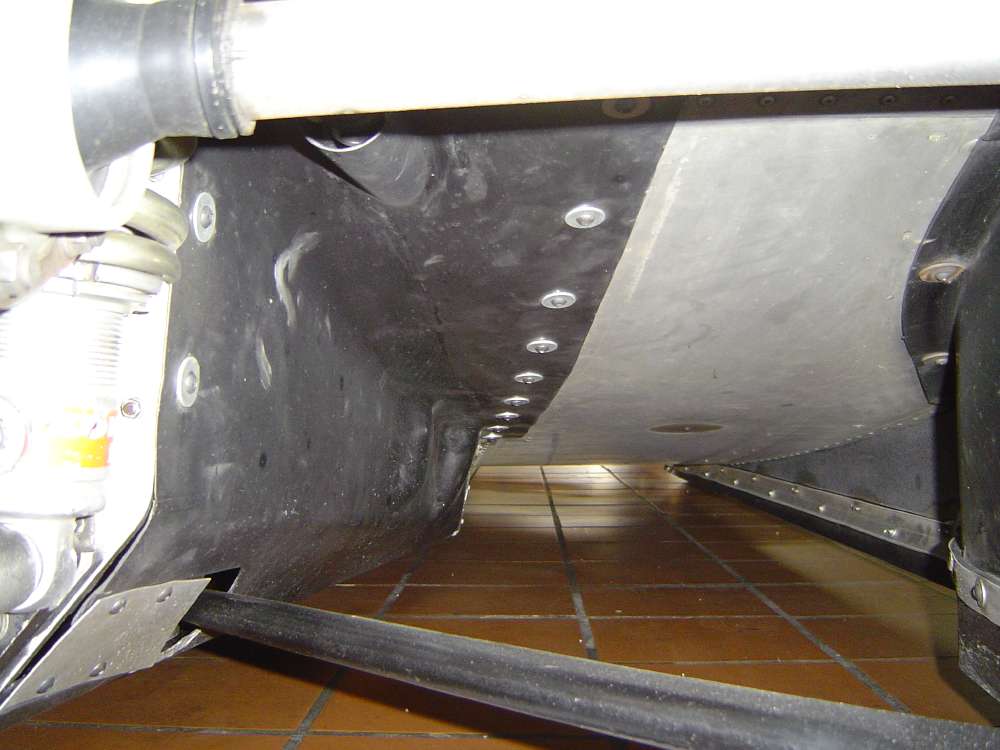
|
|
|
|

|
|
|
#2765 | |
|
Rookie
Join Date: Jul 2014
Posts: 46
 |
The top 1980 F1 cars carried ballasts to meet the minimum weight limit. If the ballasts are removed, F1 cars will go quicker.
The DeltaWing Coupe does not have any ballast. Watkins Glen 3.4 miles – chicane before Turn 5 2014 DeltaWing Coupe – 1:40.538 Lap Average Speed = 3.4 miles / (100.538 / 3600) hour = 121.7 mph http://www.deltawingracing.com/news/...kins-glen.html http://www.youtube.com/watch?v=JfvEb69zw14 http://www.youtube.com/watch?v=0UZVsVZ5QfE Watkins Glen 5.435 km (3.377 miles) – chicane after Turn 2 1980 F1 Brabham BT49 – 1:34.080 Lap Average Speed = 3.377 miles / (94.08 / 3600) hour = 129.2 mph 1980 F1 Williams FW07B – 1:34.068 Lap Average Speed = 3.377 miles / (94.068 / 3600) hour = 129.2 mph http://en.espnf1.com/f1/motorsport/race/1730.html http://archive.motorsportmagazine.co.../96/alan-jones http://archive.motorsportmagazine.co.../us-grand-prix http://www.youtube.com/watch?v=A7JZaRb_zdM http://www.youtube.com/watch?v=_DYr6AlbGLk http://www.youtube.com/watch?v=SuOPNCkn1IQ Power to Weight Ratio Car weight includes driver and fuel. Assume combined weight of driver and fuel to be 80 kg during a low-fuel qualifying lap. 1 metric ton = 1000 kg 2014 DeltaWing Coupe Power to Weight Ratio = 350 HP / (570 / 1000) ton = 614 HP/ton 1980 F1 Brabham BT49 1980 F1 Williams FW07B Power to Weight Ratio = 485 HP / (660 / 1000) ton = 735 HP/ton http://nasportscar.com/bens-tech-corner-the-deltawing/ http://www.gurneyflap.com/bt49-technique1.html http://archive.motorsportmagazine.co...46/simply-best http://archive.motorsportmagazine.co...-era-black-art http://archive.motorsportmagazine.co...1/21/head-line http://archive.motorsportmagazine.co.../williams-fw07 http://archive.motorsportmagazine.co...hen-wind-blows Brabham BT49 chief engineer Gordon Murray Interview Mention the BT49 to its designer and, even for a man with a track record such as Gordon Murray's, it's clear it is a car of which he remains exceptionally proud to this day. "What I love about it is its simplicity and elegance. There is nothing in the least bit complicated on the car it all just worked. We ended up using it for four seasons, from 1979-82." It may have been simple but it worked. Introduced too late in 1979 for its true effect to be felt, the next season Piquet came second only to Jones' Williams, claiming the first of his three titles the following year. It was finally overcome in 1982 by the turbo revolution and, then, the ban on skirts, the latter a move the BT49 felt more than perhaps any of its opponents. Nor did its design lack innovation. As Murray points out, "it was the first Fl car to use carbon-fiber in its tub and though it was also part aluminum, we used carbon-fiber in the car's structure two years before McLaren." That, however, was not the BT49's secret weapon, the reason which made the car the class of the F1 field and gave Brabham its first driver's title since 1967. The ace up its elegant sleeve, says Murray, was downforce. "It just had more of it, more than any other car out there and it all came from the ground effect. We ran the car with no front wing at all and scarcely any at the back. It all came from under the car and it generated more pure downforce, I think, even than the Williams. When we had to run a flat bottom, we lost two-thirds of the downforce in an instant." Its engineering simplicity did, however, play a key role. "It was the most reliable car of its era.”  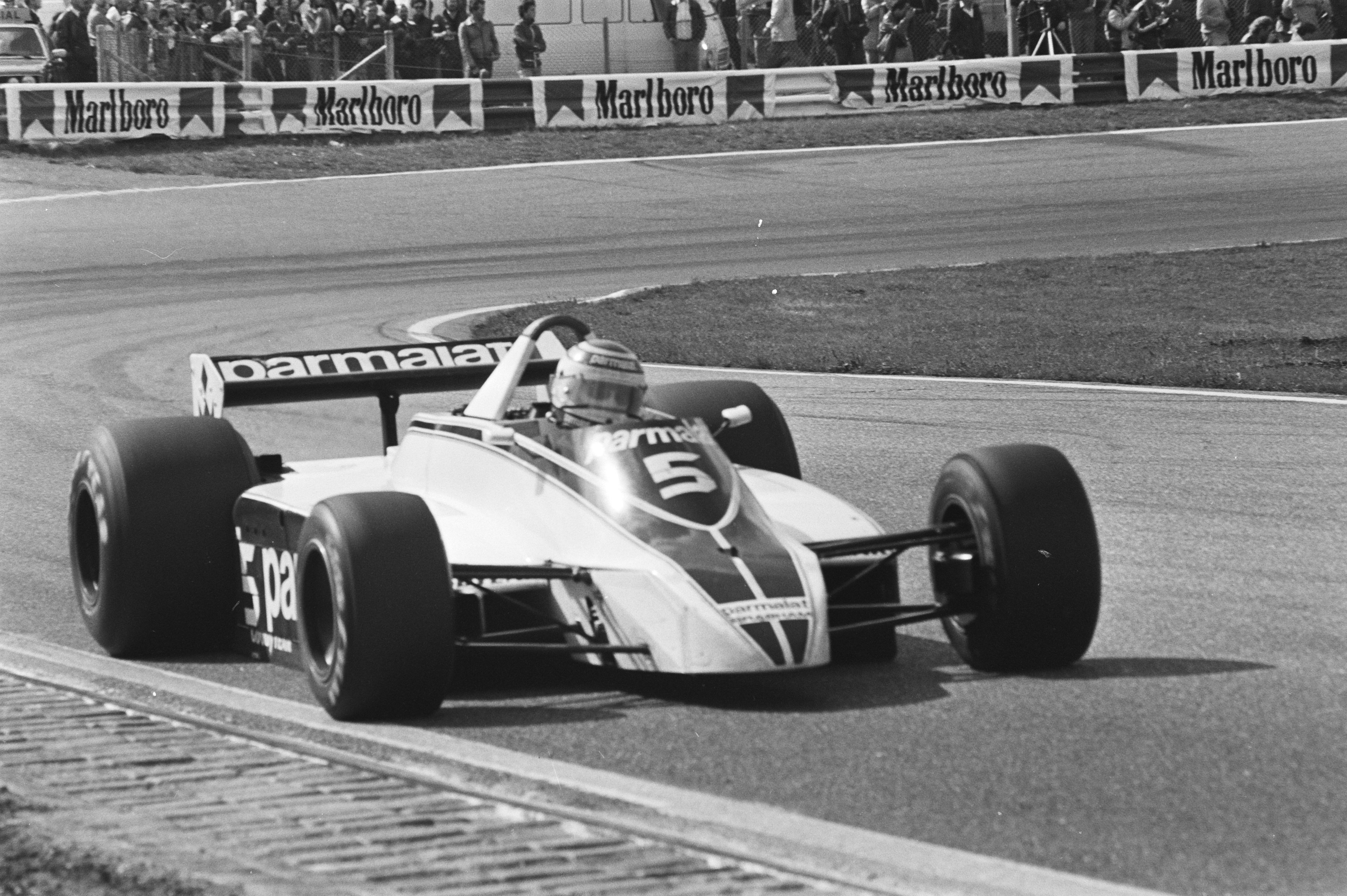  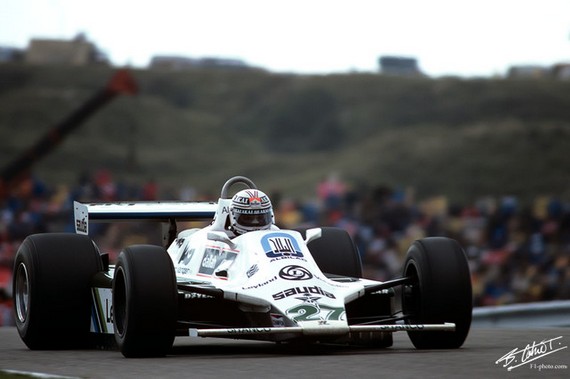 |
|
|
|

|
|
|
#2766 | |
|
Rookie
Join Date: Jul 2014
Posts: 46
 |
2014 DeltaWing Coupe Fuel Consumption
Watkins Glen 3.4 miles 1 liter = 0.264 US gallon Assume 3 liters of fuel left at the end of a race stint. 30 laps per stint Fuel Consumption = (3.4 x 30) miles / (42 x 0.264) gallons = 9.2 mpg 2014 DeltaWing Coupe: 350 HP , 490 kg (without driver) , 45 liters fuel tank http://nasportscar.com/bens-tech-corner-the-deltawing/ http://www.deltawingracing.com/tech-specs/ http://www.imsatiming.com/Results/ 1979 F1 Williams FW07 Fuel Consumption Silverstone 4.718 km 1 Imperial Gallon = 1.2 US gallon Fuel Consumption = (track length x number of laps) / fuel used Number of laps = race laps + warm-up lap Fuel Consumption = ((4.718 x 0.6214) miles x 69 laps) / (35 x 1.2) US gallons = 4.8 mpg 1979 F1 Williams FW07: 480 HP , 580 kg (without driver) , 182 liters fuel tank http://www.gurneyflap.com/fw07technique1.html http://www.grandprixengines.co.uk/ http://www.f1technical.net/f1db/cars/483/williams-fw07c http://www.atlasf1.com/evolution/1980s.html http://archive.motorsportmagazine.co...illiams-detail http://archive.motorsportmagazine.co...ish-grand-prix http://archive.motorsportmagazine.co...h-patrick-head http://www.youtube.com/watch?v=JeAFxiM34po http://www.youtube.com/watch?v=qnNA1Gd1dmM Williams set-up data for the car in which Clay Regazzoni scored the team's first victory, in the 1979 British GP at Silverstone: Clay's car that day was Williams 'FW07/02', powered by Cosworth-Ford DFV engine '228'. The car was rolled out on 11-inch wide front wheel rims and 18-inch wide rear wheel rims. Its front suspension was set up with zero degrees toe-in and castor angle, but while the left-front wheel had 3/4-degree negative camber, the right-front had 1/2-deg neg. Front ride-height was just 23/4 inches. The rear suspension had 30 minutes toe-in, while the left-rear wheel camber was set at 1/2-degree negative in contrast to the right-rear wheel's zero setting. Rear ride height was 31/4 inches. Having set up his car to provide the bite and traction he preferred around Silverstone, Clay then ran matching 3/4-inch diameter 16-gauge anti-roll bars front and rear, set to 'full soft' front and 'full stiff' rear. Front springs were rated at 800Ibs, rears at 950. The nose wings were set at 2-degrees incidence, and the rear wing at "Hole 6 +1/2-inch flap". Indefatigable Clay started the race from 'P3' and his times were remarkably consistent, mostly in the 1 min 15sec range. Having started with 37 gallons of fuel, the crew removed just two gallons post-race. Fuel consumption for the winning 1298Ibs of Williams FW07 had been 5.86mpg, oil consumption eight pints, and Clay had left the tachometer tell-tale at 11,050rpm. Williams chief engineer Patrick Head on the FW07: “We did a week-long wind-tunnel test with a car which wasn't an exact Lotus copy, but was as close as I could tell. I wasn't certain how the 79 was working but, once I'd taken some pressure tappings, it was clear what was going on. At some point I removed the front wings, and although the balance was wrong, the lift-to-drag ratio was hugely better. Also, the pressure tappings on the underside were much better; it was clear the front wings were significantly damaging airflow under the sidepods. So we extended the sidepods much further forward and ran either no front wing or a neutral front wing: and it was this which significantly stepped the performance up above where the Lotus had been. Even so, it took a long time to design: we were only just becoming a two-car team and we did the first four races of 79 in the old FW06. Frank Dernie joined us in January 1979 and finished off the rear suspension and the skirt package on the side of the car. Because of low pressure under the car, the skirts were being continually sucked in and we had to design them to go freely up and down while being continually subjected to these forces from outside to inside. It was quite a complex piece of engineering with loads of rollers and a constant-load spring scissor system — and Frank did it brilliantly. We first ran it at the now-defunct Ontario Motor Speedway. Alan went out, did a few laps, came in, and just sat in the cockpit. Eventually he said, "Now I know why Andretti could run bloody rings around me!" Then he said the car had so much grip it wouldn't slide whatever he did; but by the time he got to the Spanish GP, he could be seen sliding it everywhere. It was just a new level of downforce which needed getting used to. It took two or three races to sort out some silly reliability problems, then Alan led at Zolder and Clay was second at Monaco. By the time we got to the British GP, we'd done an upgrade on the back, which produced more downforce. It was pretty simple, cost about 50 pence and took about two hours to make: we panelled in the underside of the car up to the bottom of the engine. At Silverstone it was worth about a second a lap. From then on we were very strong and should have won the title in 1979, but we came good too late to stop Jody Scheckter and Ferrari. Two entirely different cars were called 07B. The first one we took to practice in Argentina at the start of 1980 and got into monstrous porpoising problems. We had a new composite sidepod which was quite adventurous, but not stiff enough: it flexed, jamming the skirts, so we converted it back to 07-spec, retired the original 07B without a race mile and, by Zolder, produced the proper 07B. It was quite different in its bodywork and sidepods and, with a carbon underside and skirts, was quite advanced for 1980. Effectively, that was the car Alan won our first title in. He should have won it easily but went off a couple of times, mainly through surprise at how far ahead of the opposition he was. It didn't quite go down to the wire, but it did cause a head-to-head with Nelson Piquet's Brabham BT49 in Montreal.”  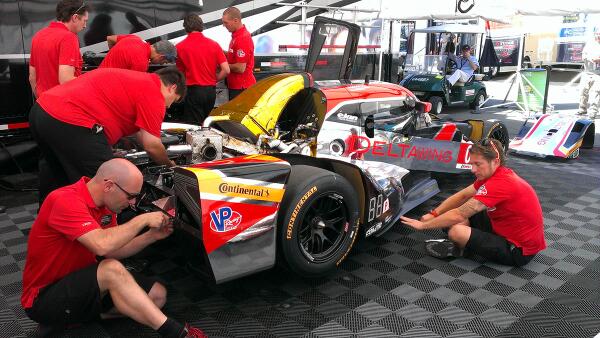 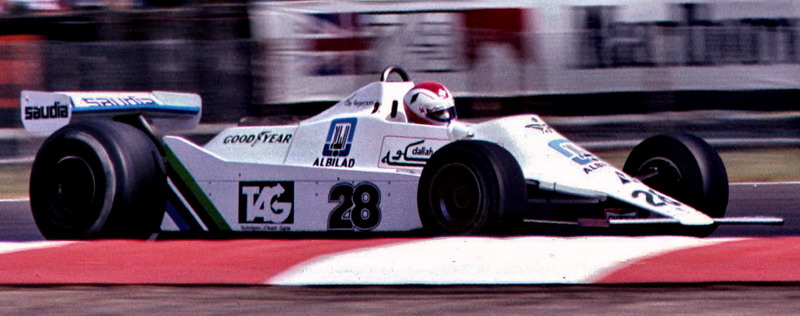 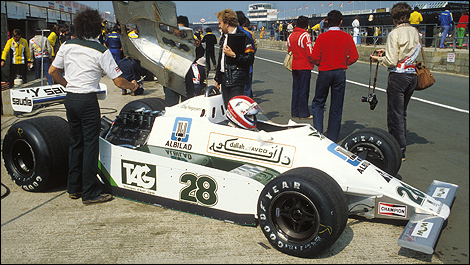
|
|
|
|

|
|
|
#2767 | |
|
Veteran
Join Date: Jan 2012
Posts: 4,434
         |
Again, next to nothing to do with the DWing and again, thank you very, very much for the history, Great cars from a great era.
|
|
|
|

|
|
|
#2768 | |
|
Racer
Join Date: Dec 2012
Posts: 365
  |
Eagle, that L/D number is off. It should be higher than 6.
Your DF numbers are too low and your drag is too high at the same time. The car would never perform as well as it does if it really had L/D of 4. A well sorted out DW car would actually beat the F1 ground effect cars in L/D, because the drag numbers of the DW would be far better due to closed/semi-closed wheels and due to complete absence of wings. But looking at how wings are now appearing on the DW, it looks like we will never see some magic L/D anytime soon in motorsport. |
|
|
|

|
|
|
#2769 | ||
 Race Official Race Official20KPINAL
Join Date: Jul 2008
Posts: 23,218
           |
Got to agree. As interesting as the history of ground effect is in F1 and it was one of my favourite eras, it doesn't have anything to do with the D-Wing at all. F1 cars used a completely different method for achieving downforce through ground effect than the D-Wing does, as the posts of BT49s and FW07s have shown.
|
||
|
|
__________________
"If you're not winning you're not trying." Colin Chapman. 
|
|
|
#2770 | |
|
Rookie
Join Date: Jul 2014
Posts: 46
 |
Examples of “half the power, almost half the weight, similar performance”:
http://allf1.info/ Brands Hatch 4.206 km 1984 F1 1050HP Brabham BT53-BMW – 1:10.869 1982 F1 Williams FW08-Cosworth DFV – 1:09.540 Lap Average Speed = (4.206 x 0.6214) miles / (69.54 s / 3600) hour = 135.3 mph http://en.espnf1.com/f1/motorsport/race/1786.html http://www.gurneyflap.com/bmwturbof1engine.html http://en.espnf1.com/f1/motorsport/race/1755.html http://archive.motorsportmagazine.co...august-1982/32 http://archive.motorsportmagazine.co...august-1982/33 http://www.ultimatecarpage.com/car/3...-Cosworth.html http://www.youtube.com/watch?v=NpDK7fty3Hs Montreal 4.410 km 1980 F1 Brabham BT49-Cosworth DFV – 1:27.328 Lap Average Speed = (4.41 x 0.6214) miles / (87.328 s / 3600) hour = 113 mph Montreal 4.390 km 1990 Group C 1000HP Mercedes C11 – 1:25.407 http://en.espnf1.com/f1/motorsport/race/1729.html http://archive.motorsportmagazine.co...vember-1980/91 http://archive.motorsportmagazine.co...vember-1980/93 http://www.gurneyflap.com/bt49-technique1.html http://www.weismann.net/brabham.html http://www.wsrp.cz/wsc1990.html http://en.wikipedia.org/wiki/Mercedes-Benz_C11 http://www.youtube.com/watch?v=uDc3DbUISS0 http://www.youtube.com/watch?v=7-21jsFAc0I Monaco 3.312 km 1983 F1 850HP Renault RE40 – 1:24.840 1982 F1 Brabham BT49D-Cosworth DFV – 1:23.791 Lap Average Speed = (3.312 x 0.6214) miles / (83.791 s / 3600) hour = 88.4 mph http://en.espnf1.com/f1/motorsport/race/1766.html http://www.ultimatecarpage.com/car/7...ault-RE40.html http://en.espnf1.com/f1/motorsport/race/1751.html http://archive.motorsportmagazine.co...aco-grand-prix http://archive.motorsportmagazine.co...-go-mad-monaco http://www.ultimatecarpage.com/car/5...-Cosworth.html http://riccardopatrese.net/weblog/?page_id=4188 http://www.youtube.com/watch?v=GjxRFaz2SDY 1977–1993 F1 driver Riccardo Patrese: “The best of the sports cars to drive was the Lancia LC2 because it had a lot of downforce, very quick, and very efficient aerodynamically. It was very close in performance to F1 cars at the time. The best F1 cars for me was the 1991 Williams FW14 and the 1982 Brabham BT49D which I won the Monaco GP with.” Dijon 3.800 km 1990 Group C 1000HP Mercedes C11 – 1:05.527 1982 F1 McLaren MP4/1B-Cosworth DFV – 1:02.984 Lap Average Speed = (3.8 x 0.6214) miles / (62.984 s / 3600) hour = 135 mph http://www.wsrp.cz/wsc1990.html http://retrorace.tumblr.com/post/251...nz-c11-group-c http://en.espnf1.com/f1/motorsport/race/1759.html http://archive.motorsportmagazine.co...iss-grand-prix http://www.ultimatecarpage.com/car/3...-Cosworth.html http://www.youtube.com/watch?v=8x9SOPts6DI http://www.youtube.com/watch?v=TsbKDT7O8Pg Silverstone 4.719 km 1986 Group C 850HP Lancia LC2-86-Ferrari – 1:10.810 1982 F1 McLaren MP4/1B-Cosworth DFV – 1:10.01 Lap Average Speed = (4.718 x 0.6214) miles / (70.01 s / 3600) hour = 150.8 mph http://www.wsrp.cz/wsc1986.html http://www.ultimatecarpage.com/car/248/Lancia-LC2.html http://www.carskings.com/news/the-gr...tos-and-video/ http://forums.autosport.com/topic/74...-author/page-2 http://forums.autosport.com/topic/74...-author/page-7 http://www.youtube.com/watch?v=l7vpbDus9UI McLaren test driver Tommy Byrne on the MP4/1B: “Here was Boutsen talking about understeer and he was a guy I respected as quick. But once I got in the car my worries completely dissolved. Yes, there was some understeer, but all I did was brake a bit earlier, turn in a bit earlier and get on the gas a bit earlier. Result: no understeer! The car was unbelievable! It was so fast I had to use 4th gear in all the turns that Boutsen was using 3rd. It was easy to drive. A pleasure compared to the Theodore. I was already as quick as Boutsen before I came in for my new tires. Now I was excited! Back out faster again my last three laps were identical 1.10.01, 1.10.01, 1.10.01. Remember these were race tires and in those days qualifying tires were up to 2 seconds a lap faster.”  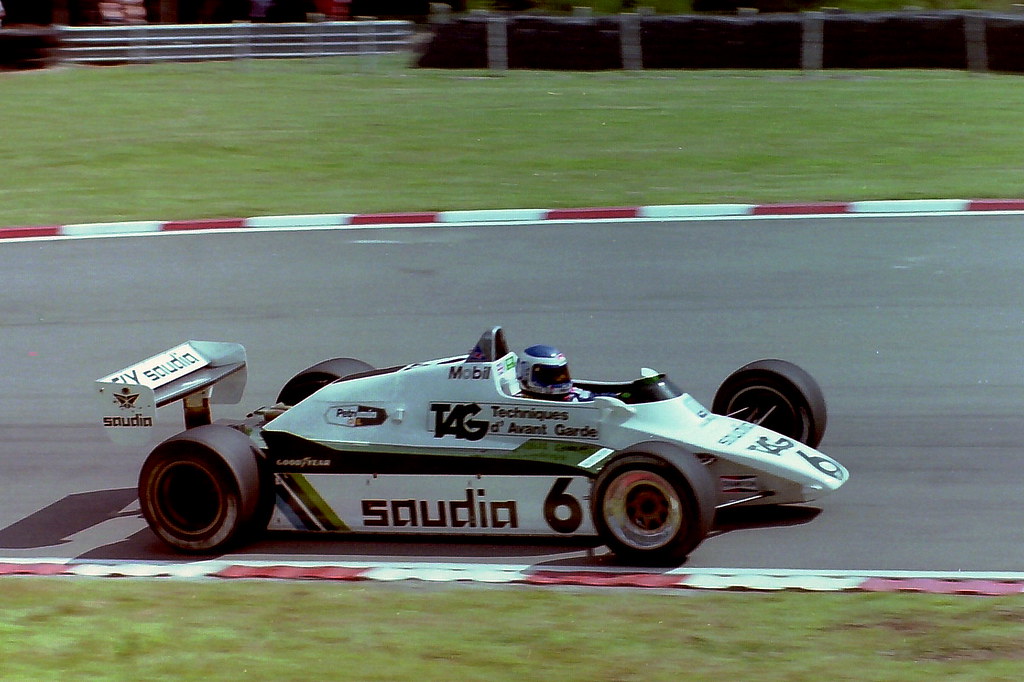 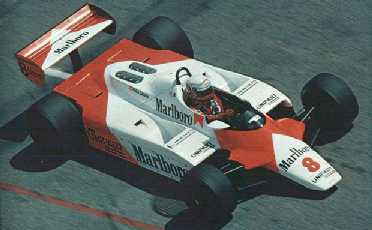  
|
|
|
|

|
|
|
#2771 | ||
|
Rookie
Join Date: Jul 2014
Posts: 46
 |
Quote:
Thanks for the info. Are you talking about the open-cockpit or closed-cockpit DeltaWing? The websites show these numbers: Closed-cockpit 2014 DeltaWing Coupe: -L/D = 4 http://www.deltawingracing.com/tech-specs/ Open-cockpit 2012 Nissan DeltaWing: -L/D = 5 http://www.highcroftracing.com/deltawing/ http://www.mulsannescorner.com/newsmarch12.html If these numbers are wrong, please correct them. |
||
|
|

|
|
|
#2772 | |
|
Rookie
Join Date: Jul 2014
Posts: 46
 |
Let’s compare the DeltaWing Coupe to ground-effect F1 cars by using LMP1 as a reference point.
The top 1982 F1 cars carried ballasts to meet the minimum weight limit. If the ballasts are removed, F1 cars will go quicker. LMP1 cars and DeltaWing do not carry any ballast. Paul Ricard 5.791 km (slightly slower configuration) 2008 LMP1 Audi R10 – 1:39.705 Paul Ricard 5.810 km 1980 F1 Williams FW07B-Cosworth DFV – 1:39.50 1982 F1 Williams FW08-Cosworth DFV – 1:37.780 1982 F1 McLaren MP4/1B-Cosworth DFV – 1:37.778 Lap Average Speed = (5.81 x 0.6214) miles / (97.778 s / 3600) hour = 132.9 mph http://elms.alkamelsystems.com/ http://www.circuitpaulricard.com/en/...ilities_tracks http://www.planetlemans.com/2008/03/...times-at-1800/ http://www.youtube.com/watch?v=qKdfs28oWMc http://en.espnf1.com/f1/motorsport/race/1723.html http://en.espnf1.com/f1/motorsport/race/1756.html http://archive.motorsportmagazine.co...nch-grand-prix http://www.fijen.se/wordpress/2013/1...rand-prix-f-1/ http://mccabism.blogspot.com/2012_06_01_archive.html http://www.youtube.com/watch?v=7hs9e6ydWyc http://www.youtube.com/watch?v=3iyQZCLYXmA McLaren MP4/1 chief engineer John Barnard: “The focus in F1 at that time was very much on ground effects. To optimize that I wanted the largest underwing possible, which meant having a narrow chassis. When you narrow the chassis, certainly at the bottom, you start to lose structural stiffness. The only way to reduce the chassis section while retaining the necessary torsional stiffness was to use carbon fiber rather than just a different gauge of aluminum.” Barnard found out that the design of the rear of the car was just as important as the front. By wrapping the rear end much more tightly, air could flow out the back of the car over the rear diffuser, thereby increasing the downforce of the car as a result of the low pressure created. http://www.compositestoday.com/2014/...olution-in-f1/ http://www.youtube.com/watch?v=WtxXpsR-GWE Monza 5.793 km 2008 LMP1 Audi R10 – 1:33.193 Monza 5.800 km 1982 F1 Williams FW08-Cosworth DFV – 1:31.834 Lap Average Speed = (5.8 x 0.6214) miles / (91.834 s / 3600) hour = 141.3 mph http://allf1.info/ http://elms.alkamelsystems.com/ http://www.planetlemans.com/2008/04/...km-qualifying/ http://www.youtube.com/watch?v=QtwcFFzcN-o http://en.espnf1.com/f1/motorsport/race/1760.html http://archive.motorsportmagazine.co...ian-grand-prix http://www.youtube.com/watch?v=6h70YRP1YNc Road America 4.048 miles 2014 DeltaWing Coupe – 1:57.754 Lap Average Speed = 4.048 miles / (117.754 s / 3600) hour = 123.8 mph 2008 LMP1 Audi R10 – 1:46.935 Lap Average Speed = 4.048 miles / (106.935 s / 3600) hour = 136.3 mph http://www.imsatiming.com/Results/ http://www.crash.net/alms/results/13...ing-times.html http://www.youtube.com/watch?v=kHOBIBf84e8 http://www.youtube.com/watch?v=mZA7gRX1UHQ Power to Weight Ratio Car weight includes driver and fuel. Assume combined weight of driver and fuel to be 80 kg during a low-fuel qualifying lap. 1 metric ton = 1000 kg 2014 DeltaWing Coupe Power to Weight Ratio = 350 HP / (570 kg / 1000) ton = 614 HP/ton 2008 LMP1 Audi R10 Power to Weight Ratio = 690 HP / (1005 kg / 1000) ton = 687 HP/ton 1982 F1 Williams FW08-Cosworth DFV Power to Weight Ratio = 515 HP / (660 kg / 1000) ton = 780 HP/ton Torque to Weight Ratio 1982 F1 Williams FW08-Cosworth DFV Torque to Weight Ratio = 270 lb-ft / (660 kg / 1000) ton = 409 lb-ft/ton 2014 DeltaWing Coupe Torque to Weight Ratio = 270 lb-ft / (570 kg / 1000) ton = 474 lb-ft/ton 2008 LMP1 Audi R10 Torque to Weight Ratio = 811 lb-ft / (1005 kg / 1000) ton = 807 lb-ft/ton http://www.deltawingracing.com/tech-specs/ http://www.ultimatecarpage.com/car/2...i-R10-TDI.html http://fourtitude.com/news/Audi_News...acing-engines/ http://www.gurneyflap.com/fw08technique.html http://www.historicengines.com/dfv/specs.html http://www.grandprixengines.co.uk http://www.epi-eng.com/piston_engine..._yardstick.htm The top 1982 Cosworth-powered F1 cars and 2008 LMP1 cars have similar performance. The 2014 DeltaWing Coupe is much slower than 2008 LMP1 cars.   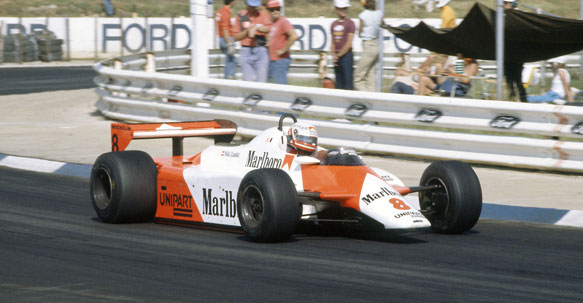 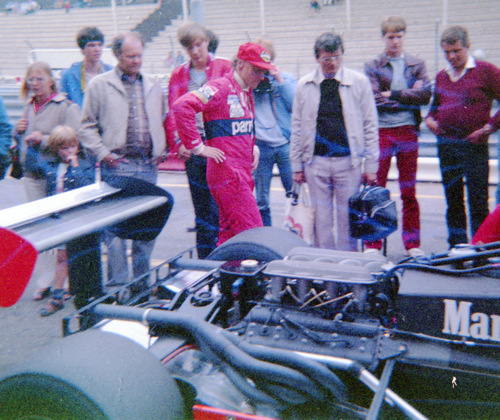   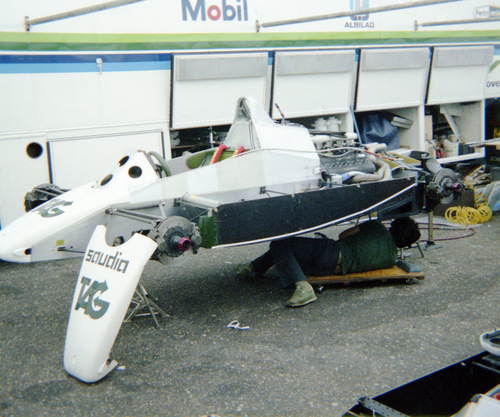 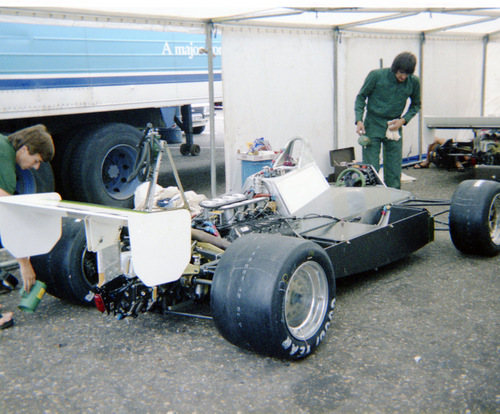
|
|
|
|

|
|
|
#2773 | ||
|
Veteran
Join Date: Dec 2006
Posts: 8,827
      |
I don't know about the Delta Wing, but all LMP1 cars do and have for sometime carried significant amounts of ballast. This is to effect handling and make sure they're above minimum weight.
However, I can't speak for the Delta Wing on that front. |
||
|
|

|
|
|
#2774 | |
|
Rookie
Join Date: Jul 2014
Posts: 46
 |
Let’s compare the DeltaWing Coupe to ground-effect F1 cars by using Group C-IMSA GTP as a reference point.
The top 1982 F1 cars carried ballasts to meet the minimum weight limit. If the ballasts are removed, F1 cars will go quicker. Group C–IMSA GTP and DeltaWing do not carry any ballast. Brands Hatch 4.206 km 1987 Group C Porsche 962C – 1:15.060 1982 F1 Williams FW08-Cosworth DFV – 1:09.540 Lap Average Speed = (4.206 x 0.6214) miles / (69.54 s / 3600) hour = 135.3 mph http://www.wsrp.cz/wsc1987.html http://www.youtube.com/watch?v=kAeg9YwCYvo http://en.espnf1.com/f1/motorsport/race/1755.html http://archive.motorsportmagazine.co...august-1982/32 http://archive.motorsportmagazine.co...august-1982/33 http://www.youtube.com/watch?v=NpDK7fty3Hs Osterreichring (Zeltweg) 5.942 km 1985 Euro Interserie Porsche 956B – 1:35.400 1982 F1 Williams FW08-Cosworth DFV – 1:30.300 Lap Average Speed = (5.942 x 0.6214) miles / (90.3 s / 3600) hour = 147.2 mph http://www.wsrp.cz/interserie1985.html http://www.ultimatecarpage.com/car/426/Porsche-956.html http://en.espnf1.com/f1/motorsport/race/1758.html http://archive.motorsportmagazine.co...tember-1982/45 http://f1-nut.com/book/book-review-k...-constanduros/ http://www.youtube.com/watch?v=N-fpWITA4uU Silverstone 4.719 km 1986 Group C “Rothmans” Porsche 962C – 1:12.560 1982 F1 McLaren MP4/1B-Cosworth DFV – 1:10.01 Lap Average Speed = (4.719 x 0.6214) miles / (70.01 s / 3600) hour = 150.8 mph http://www.wsrp.cz/wsc1986.html http://www.youtube.com/watch?v=kJ93k9o5FMA http://www.carskings.com/news/the-gr...tos-and-video/ http://forums.autosport.com/topic/74...-author/page-2 http://www.ultimatecarpage.com/car/3...-Cosworth.html http://www.youtube.com/watch?v=l7vpbDus9UI Sebring 3.74 miles 2014 DeltaWing Coupe – 1:55.468 Lap Average Speed = 3.74 miles / (115.468 s / 3600) hour = 116.6 mph Sebring 3.72 miles 1991 IMSA GTP Joest Porsche 962C – 1:50.275 Lap Average Speed = 3.72 miles / (110.275 s / 3600) hour = 121.4 mph http://en.wikipedia.org/wiki/12_Hours_of_Sebring http://www.deltawingracing.com/news/...ng-report.html http://www.youtube.com/watch?v=NxTs4trGYqQ http://www.wsrp.cz/imsa1991.html http://www.joest-racing.de/en/index....der-interserie http://www.youtube.com/watch?v=4Vk9MgXYzuI CTMP Mosport 2.459 miles 2014 DeltaWing Coupe – 1:11.561 Lap Average Speed = 2.459 miles / (71.561 s / 3600) hour = 123.7 mph 1985 Group C “Rothmans” Porsche 962C – 1:09.775 Lap Average Speed = 2.459 miles / (69.775 s / 3600) hour = 126.9 mph http://www.imsatiming.com/Results/ http://www.youtube.com/watch?v=HdfjkvS4VE0 http://www.wsrp.cz/wsc1985.html http://www.ultimatecarpage.com/car/7...che-962C-.html http://www.youtube.com/watch?v=WMAvOSah9P0 Daytona 3.56 miles 2014 DeltaWing Coupe – 1:39.270 Lap Average Speed = 3.56 miles / (99.27 s / 3600) hour = 129.1 mph 1993 IMSA GTP Joest Porsche 962C – 1:36.197 Lap Average Speed = 3.56 miles / (96.197 s / 3600) hour = 133.2 mph http://www.deltawingracing.com/news/...-24-hours.html http://www.youtube.com/watch?v=0h2jc5s7Jqc http://www.racingsportscars.com/resu...993-01-31.html http://psychoontyres.blogspot.ca/201...962-c-011.html http://www.joest-racing.de/en/index....-doppelfluegel http://www.youtube.com/watch?v=_PVvmkP_PMU Joest Racing developed a double-decker rear wing aero package for the Porsche 962C with the help of Porsche’s engineering team and wind tunnel. This is the fastest Porsche 962. Power to Weight Ratio Car weight includes driver and fuel. Assume combined weight of driver and fuel to be 80 kg during a low-fuel qualifying lap. 1 metric ton = 1000 kg 2014 DeltaWing Coupe Power to Weight Ratio = 350 HP / (570 kg / 1000) ton = 614 HP/ton IMSA GTP Porsche 962C Power to Weight Ratio = 700 HP / (930 kg / 1000) ton = 753 HP/ton 1982 F1 Williams FW08-Cosworth DFV Power to Weight Ratio = 515 HP / (660 kg / 1000) ton = 780 HP/ton Torque to Weight Ratio 1982 F1 Williams FW08-Cosworth DFV Torque to Weight Ratio = 270 lb-ft / (660 kg / 1000) ton = 409 lb-ft/ton 2014 DeltaWing Coupe Torque to Weight Ratio = 270 lb-ft / (570 kg / 1000) ton = 474 lb-ft/ton IMSA GTP Porsche 962C Torque to Weight Ratio = 500 lb-ft / (930 kg / 1000) ton = 538 lb-ft/ton http://www.deltawingracing.com/tech-specs/ http://www.gurneyflap.com/porsche956part1.html http://www.stuttcars.com/porsche-models/962/ http://www.historicporsche.com/pages...-962-011-works http://www.joest-racing.de/index.php...-doppelfluegel http://www.mulsannescorner.com/Porsche962.html http://www.mulsannescorner.com/Porsc...Joest1993.html http://www.gurneyflap.com/fw08technique.html http://www.ultimatecarpage.com/car/3...-Cosworth.html  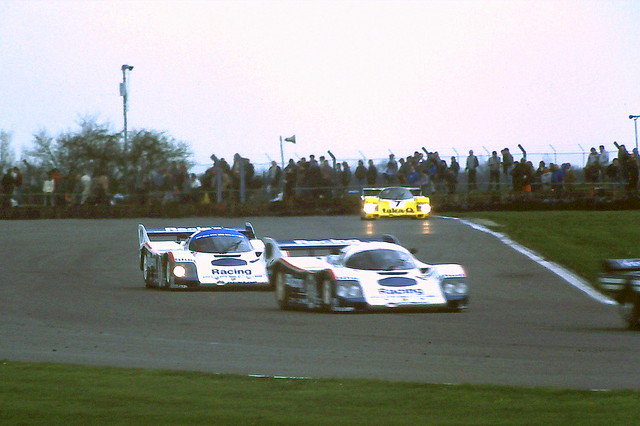  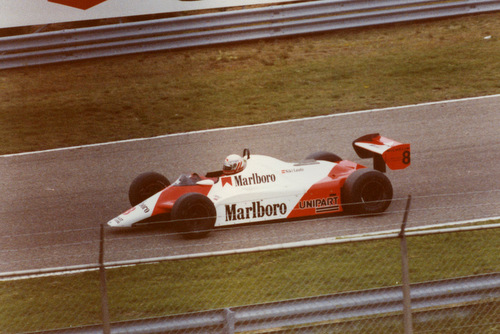   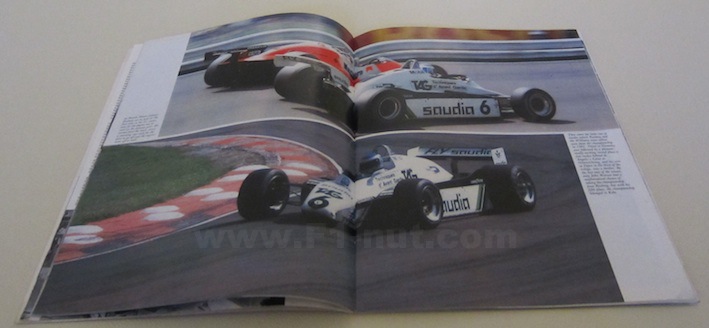
|
|
|
|

|
|
|
#2775 | ||
|
Racer
Join Date: Dec 2012
Posts: 365
  |
Quote:
The reason the DW (coupe or cabrio) can actually use less power and have high speed numbers is because the car's drag numbers are a lot lower than conventional cars with wings. At the same time the car has very good amount of downforce because it actually corners. So if a conventional P2 car has L/D of about 4 - 5, the DW must have it a lot higher than that. Heck, the Perrin LMP CAD shows L/D of 5.5, he has published the CFD data. And that is a very conventional front splitter - rear wing car. The DW should be a lot better than that as a floor is much more efficient than wings. Or think of it this way - the "50% less fuel" can never happen with the same amount of drag numbers as the conventional P2 cars have. You need to have a lot less drag to get there. And you need similar DF to get around the corners. All that makes for a much higher L/D. |
||
|
|

|
 |
|
|
 Similar Threads
Similar Threads
|
||||
| Thread | Thread Starter | Forum | Replies | Last Post |
| Wide Front Wing / Narrow rear wing | browney | Formula One | 30 | 21 Nov 2011 12:13 |
| Delta S4's that were in Rallycross | M.Lowe | Rallying & Rallycross | 23 | 30 Aug 2007 11:47 |
| Delta wing , inverted delta wing | effuno | Racing Technology | 3 | 8 Apr 2007 13:45 |